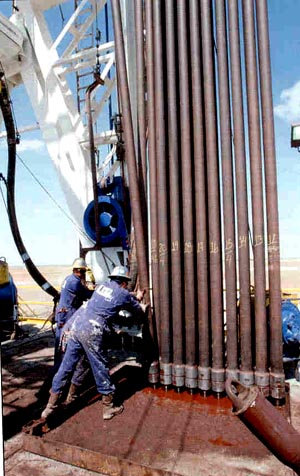Tripping Out/In: Maneuvering Pipe to Racking Area
Drill Floor Manipulator
The Drill Floor Manipulators is the primary mechanical or robotic device used in the tripping in/out process to maneuver drill pipes, casing, and other heavy tools on the drilling floor.

In this process, the pipe stand is raised and maneuvered to the pipe racking area.
- Purpose: Moves pipes and tools, reduces manual work, and prevents injuries.
- Main Uses: Tripping pipe in/out, tool handling, pipe connections, and casing.
- Benefits: Improves safety and efficiency, often used in automated rigs.
The drill floor manipulator is commonly integrated with automated rig systems and is vital for increasing operational safety and improving drilling efficiency.
Manual Pipe Handling Process: When a drill floor manipulator is not available, pipe is maneuvered manually and basic mechanical equipment. This requires more physical effort and increases safety risks, so strict procedures must be followed.
- Pipe Racking: Pipes are stored vertically in a pipe rack (or derrick monkey board) using elevators and slips.
- Tripping In: Crew members align a pipe over the wellbore using their hands and tongs or spiders, then lower it into the hole using the drawworks.
- Making a Connection: Pipes are screwed together (made up) using power tongs or manual tongs to tighten joints to the proper torque.
- Tripping Out: The process is reversed when pulling pipe out of the hole.
- Tool Handling: Workers manually carry or position tools using hoists or cranes where available.
Because this method requires more physical input, strict safety measures must be in place, and only trained personnel must perform the work. Common injuries include hand, back, and crush injuries.
Knowledge Check Choose the best answer for the question.
6-8. What should a worker do to prevent feet or toes from being crushed or amputated under a stand of pipe?
You forgot to answer the question!
